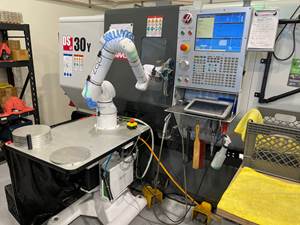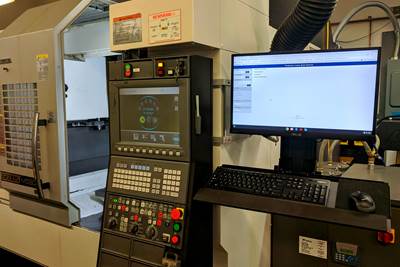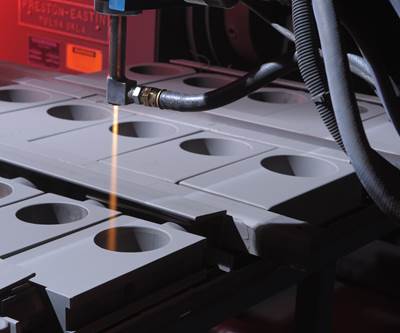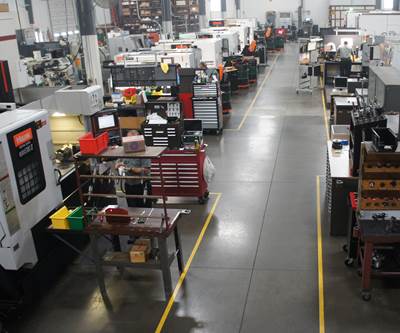ERP Makes Documentation Fast, Paperless
Touchscreen interfaces and digitized part and job data are the latest examples of an aerospace manufacturer taking advantage of its shop management software.
Share





Although had the necessary capabilities and capacity to increase aerospace parts production, something had to give. More parts meant more paper — so much more paper that, in the words of Chief Technical Officer Jason Cox, “It became ridiculous. So, we decided to eliminate all paper.”
The means to this end was already in place: Global Shop Solutions’ enterprise resource management (ERP) system. Now, all document distribution and control is electronic. Rather than packets of paper, machine operators view and enter data on screens installed at individual workstations. As a result, lead times have increased, and labor hours are easier to track. The software also helps ensure first-article documentation is ready at the same time as the work.
Customizable Dashboards, Flexible Scheduling
Originally consisting of four machines in a shop built from scrap material by Ernest “Bud” Cox, Cox Machine is now a 160-employee business that supplies aluminum brackets, ribs and other structural components to customers like Spirit Aerosystems, Cessna, Hawker Beechcraft and Gulfstream. ERP software, installed in 1997, provides the operational insight necessary to streamline operations across two separate facilities (an 80,000-square-foot building in Wichita, Kansas, where machining occurs, as well as a 24,000-square-foot sheet-metal fabricating plant nearby).
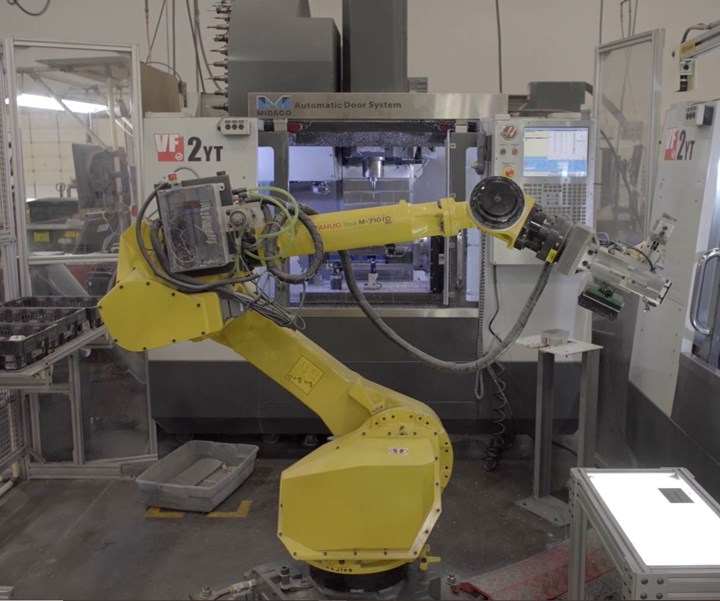
Cox Machine produces aerospace structures in machining cells like this one, each of which is considered a “workstation” in ERP software.
For example, the software’s flexible scheduling capabilities are particularly important. “We don’t choose our delivery dates; our customers choose them for us,” Mr. Cox says. “When we get conflicting delivery dates on large jobs, the system allows us to easily adjust capacity by adding shifts or moving people and workcenters around.”
In addition to both quick overviews and detailed, granular data on jobs and parts, the software offers a graphical overview of capacity. This is part of the “Advanced Planning & Scheduling” (APS) screen, which flexes to allow partially finite and partially infinite scheduling. This helps identify potential problems before they happen. “Looking out the first two weeks, we load up the system only for what the capacity of a machine will allow so that our dispatch lists are accurate,” he says. “But once we get a couple of weeks out, we have the ability to open it up so we can see if we have a capacity issue four, six, or even eight weeks from now.
Meanwhile, customizable ERP dashboards displayed on large screens throughout the plant help keep production on track. For example, the Customer Service Department has a dashboard with a split screen. The left side displays a customer’s inventory at their site and shows how many parts they have below their minimum inventory level. The right side lists every job that is either past delivery date or close to being there. “We have a 99+% on-time delivery rate,” Mr. Cox says. “This dashboard screen shows the 0.5% or so where we’re late as a way of helping people focus on what needs to get done.”

Thanks to ERP software capabilities, the shop floor at Cox Machine is paperless.
Paperless Cuts Lead Time
The decision to go paperless was a result of reducing run quantity from six month’s worth of inventory to one. This meant that the company was now creating six times as many jobs, which resulted in six times as much paper.
To avoid overwhelming the shop floor with plastic packets full of drawings, routers, specifications, part lists and more, the company installed data collection touchscreen stations at every machining cell.
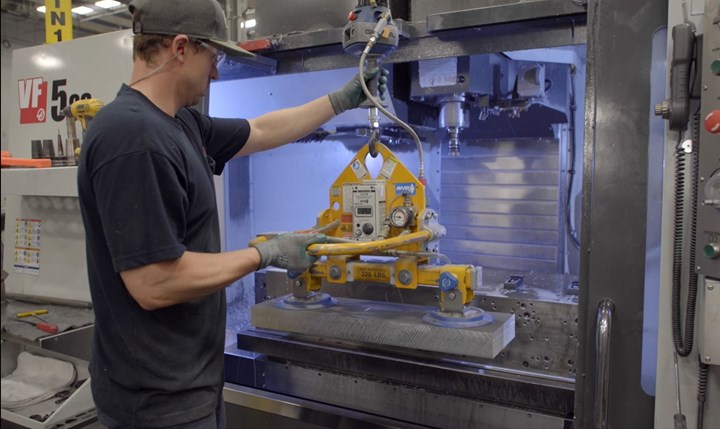
Upon clocking in, operators receive the workcenter’s (that is, the cell’s) dispatch list, which shows when the previous operation was completed as well as the order of jobs that come next. Employees can access customer and part histories, first-article inspection sheets, setup sheets with workholding and other instructions; and anything else necessary to do the job without leaving their workstations.
All of this is possible thanks to the software’s Document Control functionality, which links the ERP system to more than 60 of these touchscreens. “We learned early on that the only way you can truly go paperless is for everyone to have their own station,” Mr. Cox says. “Having so many stations also helps us do other things like track direct and indirect labor more accurately. Our operators even do their own inspection at their workstations.”
As a result, Cox Machine has reduced its standard lead time for a regular machined part from 16 weeks to an average of four. It can even turn some parts in less than a week when the opportunity arises to set up a work cell with stock material already available in inventory. And in the event of a problem, there’s also a place to turn. “We’re able to get help when we need it,” Mr. Cox says. “We usually get a response either by phone or the web-based support system in a couple of hours.”
Related Content
Increase Savings and Streamline Purchasing Operations with Amazon Business
Machine shops and small manufacturers are finding cost and time savings using Amazon Business in their shops.
Read MoreShop Quotes Smarter, Works Harder with Machine Monitoring
Temco first installed MT-LINKi to optimize quoting. Now, the software helps the shop optimize its machines — and machine purchases.
Read MoreBecoming a More Efficient Shop With the Right Processes and Software
After refining its machining processes for more efficient production, this shop still needed a better way to track its data. Here's how it found a software solution.
Read MoreSetting Up the Building Blocks for a Digital Factory
Woodward Inc. spent over a year developing an API to connect machines to its digital factory. Caron Engineering’s MiConnect has cut most of this process while also granting the shop greater access to machine information.
Read MoreRead Next
Workflow as a Competitive Advantage
As the cost of machine tools drops and the Baby Boomer generation enters retirement, the nature of competition between machine shops is trending toward data democratization and shop management software.
Read MoreERP Software Gives Shop Control Over Scheduling
After relying on time cards for labor tracking and dealing with hot stickers on almost every job, Watson Grinding switched to Global Shop Solutions’ ERP software for automated tracking and intuitive scheduling.
Read MoreManufacturing Scheduling System Keeps Shopfloor Priorities Straight
Focusing on the now rather than adhering to a plan improves throughput, allows for variation and lays a strong foundation for predictive analysis.
Read More


















